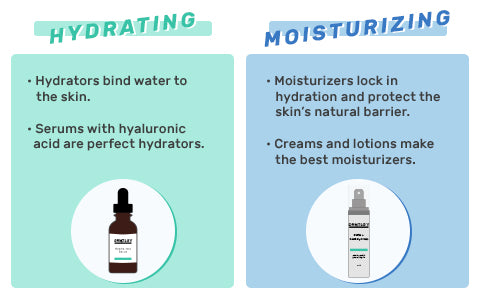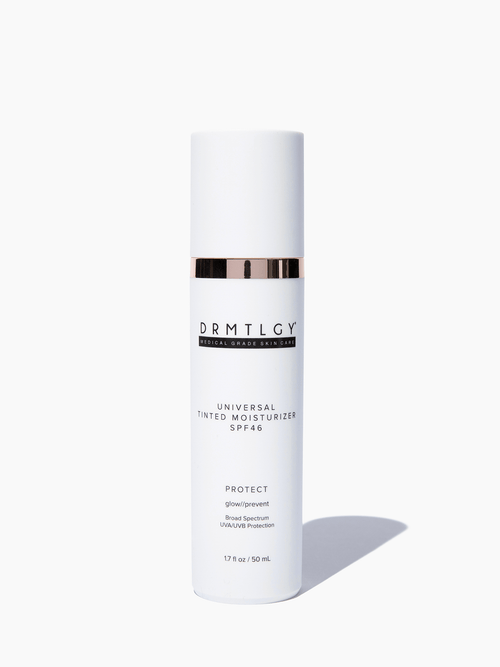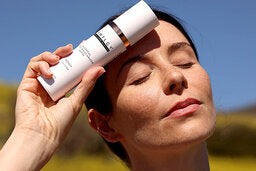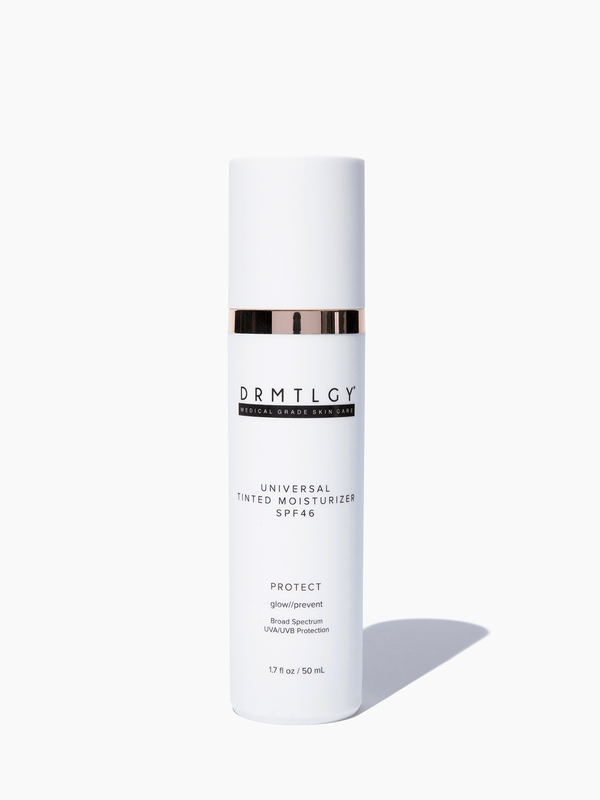So many skincare companies use the words “hydrating” and “moisturizing” in their packaging, the two have become almost synonymous. However, these words actually refer to different ideas, and knowing what they mean makes all the difference. As you’ll see, this knowledge plays a big part in the products you choose to achieve your skincare goals.
Keep reading to learn the difference between hydrating and moisturizing, the effects they have on your skin, and what ingredients to look out for.
The Important Role Water Plays in Your Skin’s Health
Because your skin contains 64% water, your skin cells need an adequate amount of H2O to function properly. Without it, your skin looks dull and features like pores and fine lines become more noticeable. Over longer periods of time, skin that lacks moisture loses its resilience and elasticity, speeding up the aging process.
However, you shouldn’t depend on just drinking water to keep your skin hydrated. Water plays a vital part in almost all of your body’s biological processes, so only a small percentage of it actually reaches your skin. Although drinking water is definitely important, it doesn’t do enough to fix your skin’s dryness.
This is where hydrating and moisturizing your skin topically comes into play.
What’s the Difference Between Hydrating and Moisturizing?

Hydrating and moisturizing is absolutely essential if you want your body’s largest organ to do its job well. After all, retaining moisture helps combat premature signs of aging and free radical damage. But, hydrators and moisturizers tackle different aspects of skin health, so you’ll want to make sure that your skin is both moisturized and hydrated.
Hydration increases the amount of water found in your skin cells. Hydrated skin cells appear plump and bouncy, and makes features like fine lines and pores harder to see. On the other hand, moisturizing seals in the water that’s already present in your skin and prevents it from evaporating. It also helps repair your skin’s moisture barrier.
Essentially, if your skin is dehydrated, it needs hydrating ingredients to add moisture back into the skin. Dry skin lacks oil and needs moisturizing ingredients to trap moisture and prevent it from leaving the skin’s surface.
Keep in mind, though, that your skin is your body’s first line of defense against bacteria, harmful chemicals, and more. Taking care of one function and not the other prevents your skin from doing the best job it can.
Hydrated skin that isn’t moisturized will lose the water content in its cells rapidly. Not only does this become a waste of your hydrator, skipping this step will leave your skin looking lackluster.
Meanwhile, moisturizing without addressing any dehydration issues doesn’t fix your skin’s underlying problem. It only locks in the little moisture that’s still present, so your skin remains dull and lifeless.
However, hydrating and moisturizing ingredients aren’t just good for those with dehydrated or dry skin. Everyone can benefit from adding them to their skincare regimen, and it becomes even more important if you use acids or retinols regularly.
8 Ingredients that Hydrate Your Skin Effectively
When your skin cells don’t have enough water, they look shriveled up instead of plump and resilient. Factors like living in a dry climate, not getting enough sleep or water, or consuming too much caffeine can make the problem worse.
People with acne-prone or oily skin often have dehydrated skin as well; using strong products that strip the skin of oil makes it easier for water to evaporate from the skin’s surface. In an attempt to fix the problem, your skin cells then produce even more oil to keep moisture in.
If you have dehydrated skin, adding hydrating ingredients into your skincare lineup adds that much-needed moisture back.
Humectants are ingredients that draw in moisture from their environment. They’re great for all skin types because they’re water-soluble -- so you don’t have to add more oil into your routine -- and they don’t clog pores.
However, make sure to apply your hydrator to damp skin, either right after cleansing or after spritzing your face with water. This will ensure that the humectants draw moisture from the water layer rather than from your skin directly.
Here are some ingredients to look out for:
- Hyaluronic acid
- Aloe vera
- Honey
- Alpha-hydroxy acids (AHAs)
- Marine extracts
- Glycerin
- Urea
- Propylene glycol
Out of all of the ingredients listed above, hyaluronic acid is probably the most popular -- and for good reason. This superstar molecule can carry a thousand times its weight in water, reducing the look of wrinkles and increasing your skin’s elasticity.
And if you’re wondering why AHAs made the list, know that these powerful acids offer more than just the benefits of exfoliation. They hydrate skin as well, helping the cells to better retain moisture over time.
Moisturize Your Skin with These 4 Skincare Ingredients
Dry skin results from a damaged lipid (oil) barrier, where your skin cells can’t produce enough oil to prevent water evaporation. Applying a good moisturizer prevents water from leaving the surface of your skin and leaving it itchy, flaky, and tight.
There is a huge variety of moisturizer formulas for pretty much every skin type and skin concern; all you have to do is find one that fits your needs. If you’re not sure what to choose, a general rule of thumb is to choose a lighter formulation for warmer months and a heavier one for fall and winter.
Ingredients to look out for include:
- Ceramides
- Oils like jojoba oil, rosehip seed oil, or almond oil
- Shea butter
- Dimethicone
After seeing the second ingredient on the list, you may be thinking, “I thought oil was bad for your skin.”
But contrary to popular belief, some oil is very much necessary for regulating the health and moisture levels of your skin. After all, why would your body produce something if it’s bad for you? The important thing to keep in mind with oil is to choose the one that’s best suited for your skin type. If you have oily skin, a few drops of a lighter oil like jojoba or grapeseed will help seal moisture in without breaking you out.
When doing your skincare routine, make sure to apply your hydrating products before your moisturizing ones. Your moisturizer also acts as a protective barrier, so your water-soluble hydrators won’t be able to sink into your skin and do their job.
Finally, if your skin is very dry or if you need some extra help during the winter months, you can apply a thin layer of petroleum jelly or another occlusive to ensure that moisture stays locked in.
One study showed that an occlusive with at least 5% petroleum jelly reduced water evaporation from the skin by more than 98%. And don’t worry, petroleum jelly won’t cause breakouts either, so feel free to slather away!
For best results, make sure to incorporate both hydrators and moisturizers in your morning and nighttime skincare routines. This allows you to reap the most benefits of these skincare powerhouses, regardless of the season.
If you want more information on which hydrating and moisturizing ingredients are best for your skin, talk to your dermatologist. You can also get in touch with one of our experts -- by providing just a few details about your skin, a licensed skincare professional can walk you through the best regimen for your unique needs.
References
Archives of Dermatological Research, 1995, Volume 287, Issue 2, pages 214-218
Clinical Medicine and Research, December 2017, Volume 15, Issues 3 and 4, page 75-87
Journal of the American Academy of Dermatology, March 1992, Volume 26, Issue 3 part 2, pages 387-396














